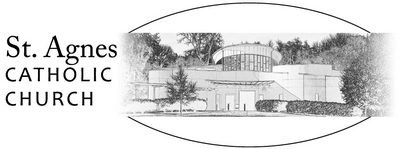Catholic Corner
November 15, 2020
In this month of remembrance, we take a moment to focus on our celebration of life through our Rites of Funerals
Like many of our ritual practices, our funeral traditions are grounded in Jewish tradition. Customs such as burial of the body, bathing and anointing the body, praying for the dead person, all these are grounded in Jewish tradition. Early Christian funeral practices also borrowed from Roman culture of the time. Christian burial sites were decorated with paintings of Jesus as the Good Shepherd, the raising of Lazarus, etc. Romans regularly celebrated meals at the cemetery, some of these were funeral meals or the “refrigerium” a meal that celebrated the person who had died (and yes this is the origin of the word refrigerator!).
Early sources show that when death was immanent the dying Christian was given the Eucharist as “food for the journey” and a sign of the resurrection. Readings were done from the Gospels and psalms were sung. When the person had died, their body was brought to the Church where the text we know as the In Paradisum was sung over the body “May the angels lead you into paradise, may the martyrs welcome you and guide you into the holy city Jerusalem.”
Today, in the revised Order of Christian Funeral the connections are made between the funeral rites and the Sacrament of Baptism. All are called to the ministry of consolation and to the full communal celebration of the eucharistic liturgy.
The symbols encountered in Christian Funeral make clear connections to the Sacrament of Baptism. The body is placed close to the font, sprinkled with Holy Water as a remembrance of baptism and a white pall, a reminder of the white garment given at baptism, is placed over the casket. Once these introductory rites are complete the body is brought close to the table near the Paschal Candle, light of Christ and promise of everlasting life. The readings of the Rite are readings of hope, readings of the Paschal Mystery and the promise of eternal life.
There follows the celebration of the Eucharist in which “all are given a foretaste of eternal life in Christ and are united with Christ, with each other, and with all the faithful, living and dead” (Order Christian Funerals #143). This is followed by the final commendation, a commendation of faith and hope! Ending with the In Paradisum the body is processed to the site of committal.
What marks the revised Order of Christian Funeral is the focus on hope, solace, faith and joy. The clear connection to baptism and life as a Christian is made clearly evident, a life wherein one no longer lives for oneself but for others, to live as Christ, in the promise of Easter joy.
